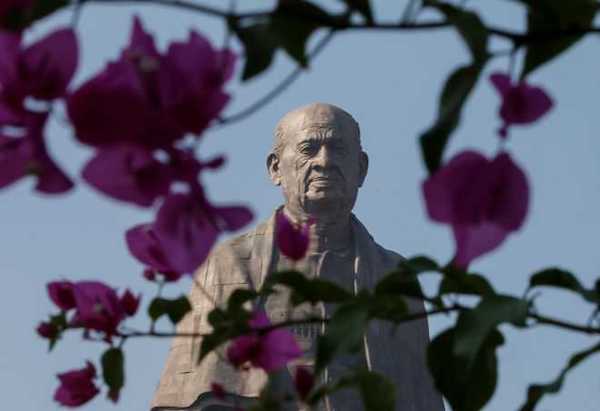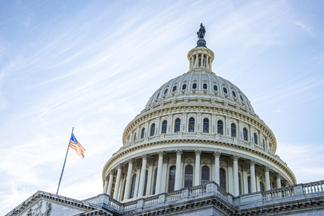

Menon had said that the Political Department, instead of following Viceroy’s scheme of persuading the princes to accede, was secretly warning them of “the loss the rulers would suffer if they were to federate”.
There was something totally inappropriate about the idea of elevating a modest man like Sardar Patel to a Colossus of Hellenistic times. The Rhodians who built the statue for Sun God Helios, used to fling into the sea four horses and a chariot “for his use” every year. Left to himself, it is doubtful whether Patel would ever have liked his grand statue against the protests of 22 villages when throughout his life he cared more for them than tall statues or glittering public rallies.
That leads to a conclusion that the idea was to appropriate Patel into the BJP– Narendra Modi pantheon which Rajmohan Gandhi, the celebrated biographer of Patel, had rejected in 2013. He said, “The country’s first home minister would not have recognized Mr. Modi as his ideological heir and been very ‘pained’ with his behavior towards Muslims”. He said that Patel was a great “team builder” and “other people were prominent in his daily life”. On October 31, 2018, LK Advani who was the central figure during the foundation stone ceremony in 2013, was conspicuously absent.
That Patel and the BJP could not have coexisted will be evident if we read Patel’s speech of February 27, 1947 on minority protection while accepting the chairmanship of the Advisory Committee to the Constituent Assembly on fundamental rights. His frank speech on August 11, 1947 at a public meeting why the Congress accepted Partition needs to be quoted verbatim: “I would make no efforts to explain away the responsibility of the Congress for dividing the country. We took these extreme steps after great deliberation. In spite of my previous strong opposition to Partition, I agreed to it because I felt convinced that in order to keep India united, it must be divided now.”
PM Modi in his Op-Ed piece on October 31 had quoted VP Menon on how Patel led “from the front” the integration of 550 Indian States. May I point out that this was just one problem that the Congress leadership had faced during the process of independence. More serious was the pernicious plotting by some elements in the Viceroy’s administration to leave India in tatters. This would be clear if we read VP Menon’s another landmark book “The Transfer of Power in India” (1957) and Mountbatten’s frank memoirs published in 1949 which has received scant attention in India.
Menon was associated with constitutional developments since 1917. From 1942 till August 1947, he was Constitutional Adviser to the Viceroy. Mountbatten, who took over as Viceroy on March 22, 1947, had frankly admitted that his predecessor, Lord Wavell, had made secret plans of quick British withdrawal from India in 1946 with the anticipated chaos following the rejection of the Cabinet Mission’s plan “affecting the loyalty of the Indian Army”. If that had happened, it would have left a serious administrative vacuum in India since the superstructure was still with British civil and military officers although the “Interim Government” (Governor-General’s Executive Council) under Jawaharlal Nehru as Vice-President with Sardar Patel as Home Member had taken charge on September 2, 1946. The Constituent Assembly had first met from December 9, 1946.
During this period, Menon was the link between the Viceroy and Congress leadership, including Nehru and Patel, and at times even Gandhiji, and he kept them informed of some secret planning by a coterie of British officers in the Political Department.
The deliberate British mischief in our nation-building had started earlier. The 1935 Government of India Act on a “Federation” with three categories of constituents would have left the future Central government out of control of the Indian nation. While the British Indian provinces and Chief Commissioners’ Provinces would accede to India, the 562 Princely States would be entitled to decide their own accession.
Menon had said that the Political Department, instead of following Viceroy’s scheme of persuading the princes to accede, was secretly warning them of “the loss the rulers would suffer if they were to federate”. He said that such scheming princes were rudely jolted when Nehru declared, while addressing the annual session of the All-India States People’s Conference on April 18, 1947 that “any state which did not come into the Constituent assembly would be treated by the country as a hostile state”.
The British tried to stifle the process of nation-building even later. Their declaration to the Cripps Mission in 1942 gave the right to even British provinces to accede or not accede to the Union or to form a separate Union or Unions. Menon said, “This was really the death blow to Indian unity”. This trend continued even during Mountbatten Viceroyship. Mountbatten records one such difficult meeting on June 13, 1947 to discuss the “paramountcy” after the transfer of power and its effect princely states: “Pandit Nehru also attacked Sir Conrad Corfield, the political adviser, to his face and said that he ought to be tried for misfeasance”.
In June 1947, Patel asked Menon to take charge of the States Department. In fact, it was Mountbatten who had created the department. He says: “Mr. V.P. Menon, my Reforms Commissioner was, much to my delight, appointed Secretary”. Pakistan’s nominee Ikramullah was appointed as Joint Secretary. From then on till August 15, 1947, all negotiations with the princes were under the leadership of Mountbatten who says the idea of accession of Indian states on three subjects (Defence, External Affairs and Communications) was Menon’s idea to get as many accessions as quickly before the transfer of power on August 15, 1947.
Our independence was won under the leadership of Gandhiji with all top leaders like Nehru, Sardar Patel, Maulana Azad, Rajendra Prasad, Jagjivan Ram and others assuming equally important roles. Our nation-building was done after August 15, 1947 with the participation of several non-Congress leaders like Dr Ambedkar, Dr SP Mukherjee, Dr John Mathai and others. They all had their differences but were united on the task of nation-building. It will be highly facile for a new BJP pantheon to claim in 2018 that only Sardar Patel was responsible for our nation-building.
(The author is Ex-Special Secretary, Cabinet Secretariat. He is author of ‘A Life in Shadow: The Secret Story of ACN Nambiar’)





Be the first to comment